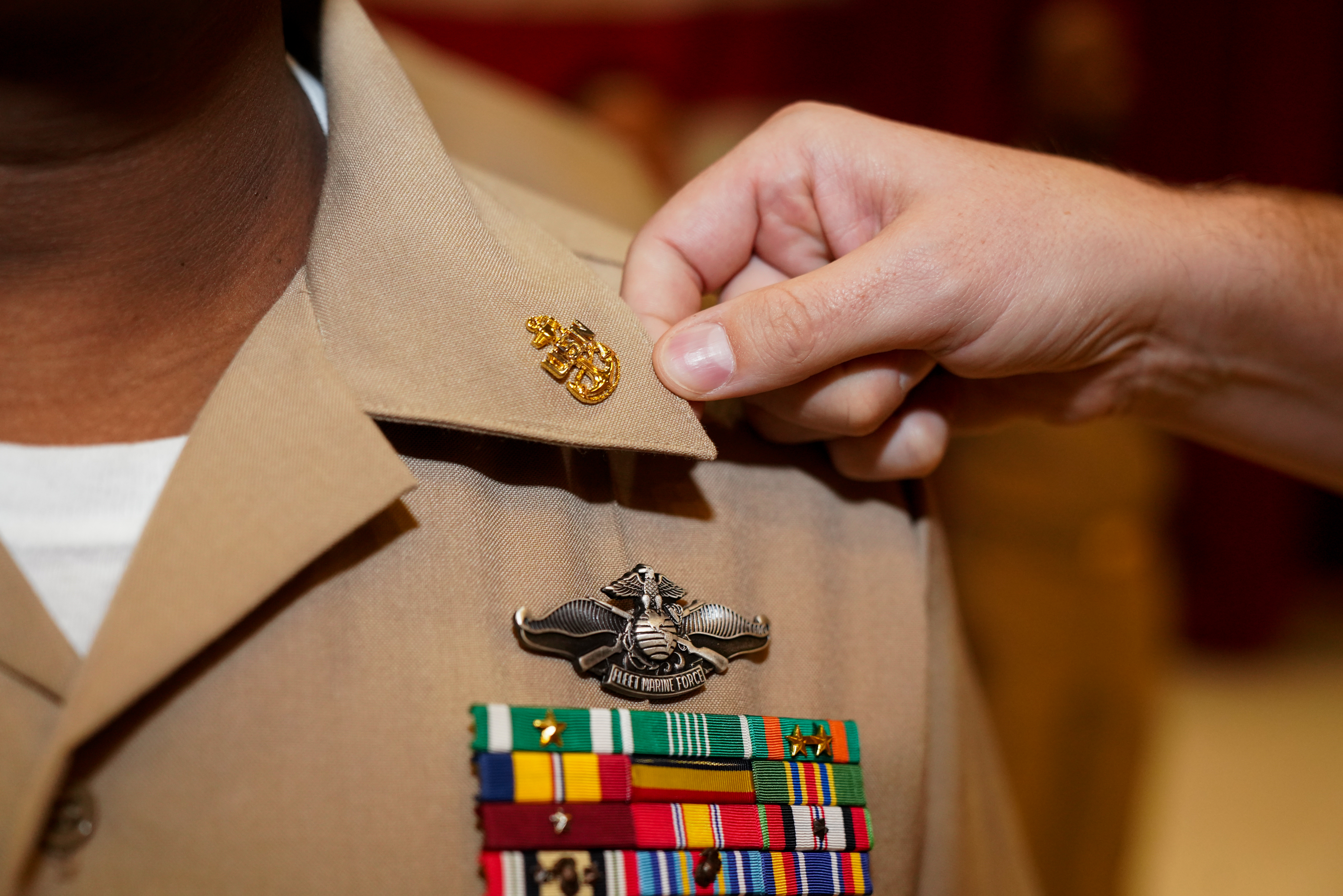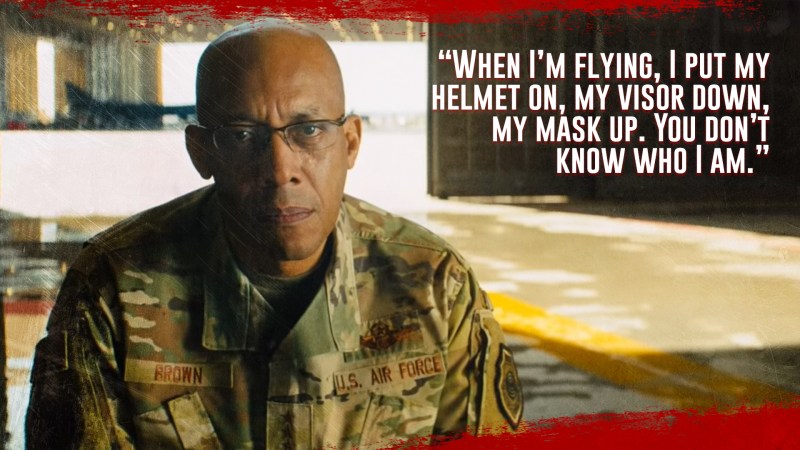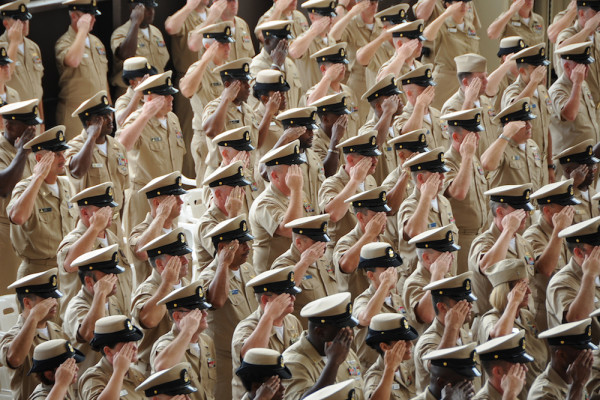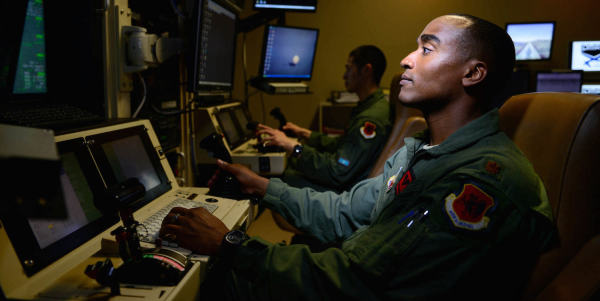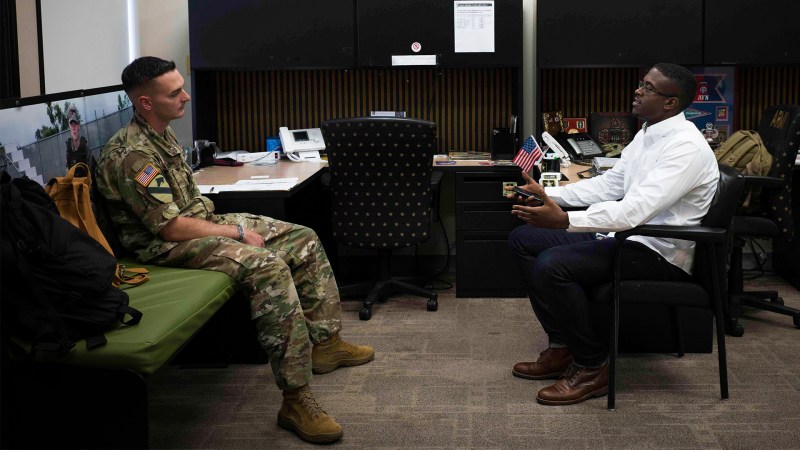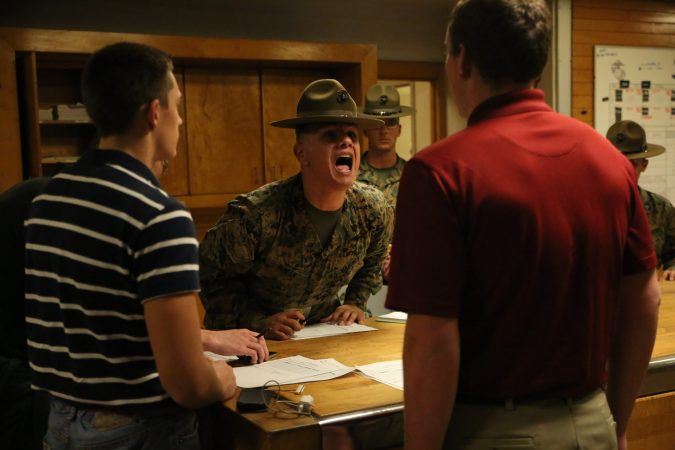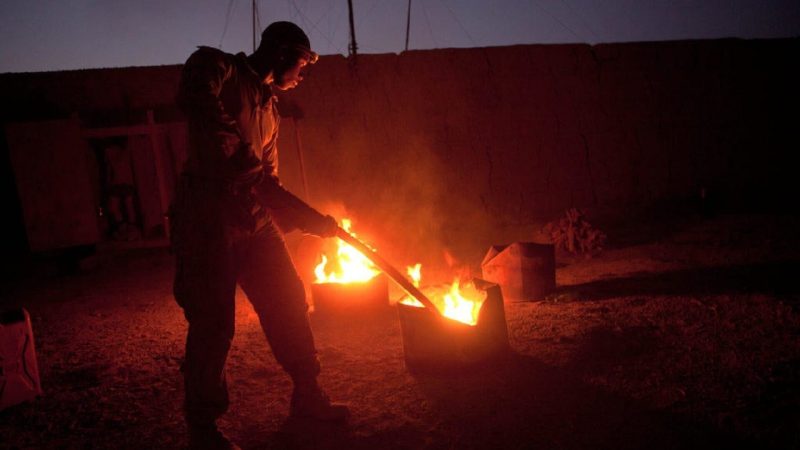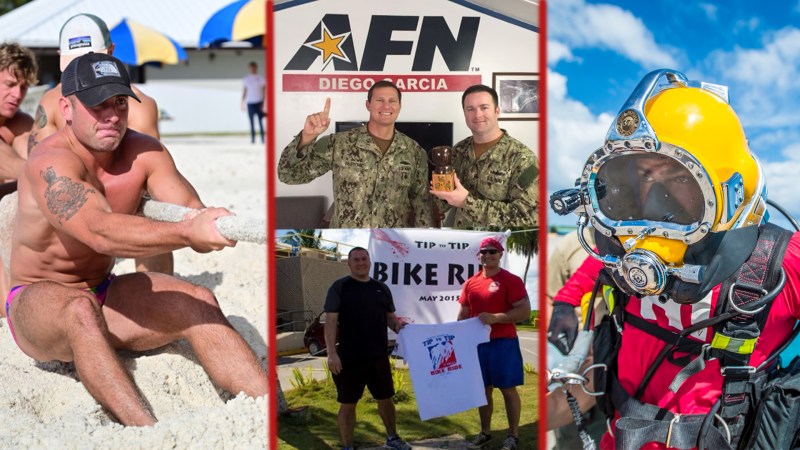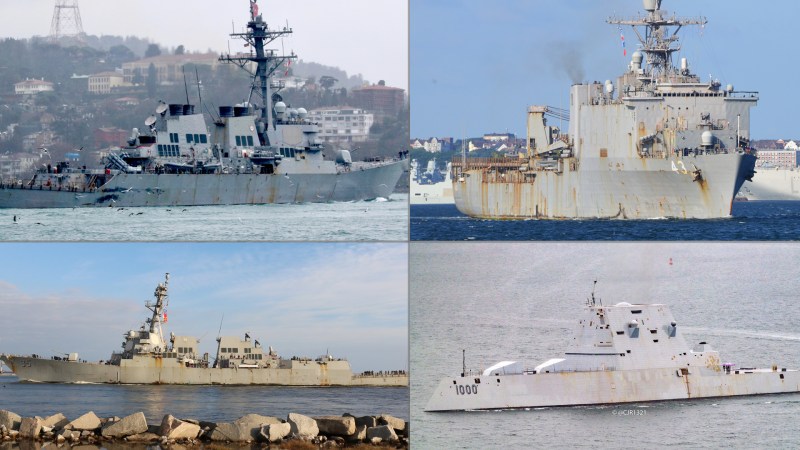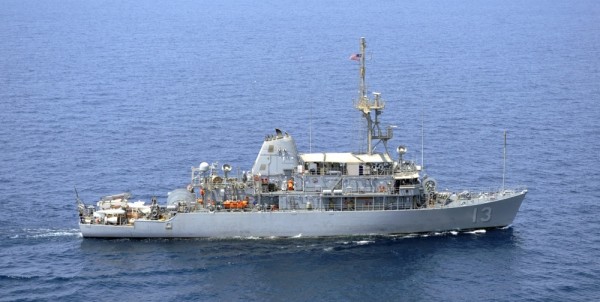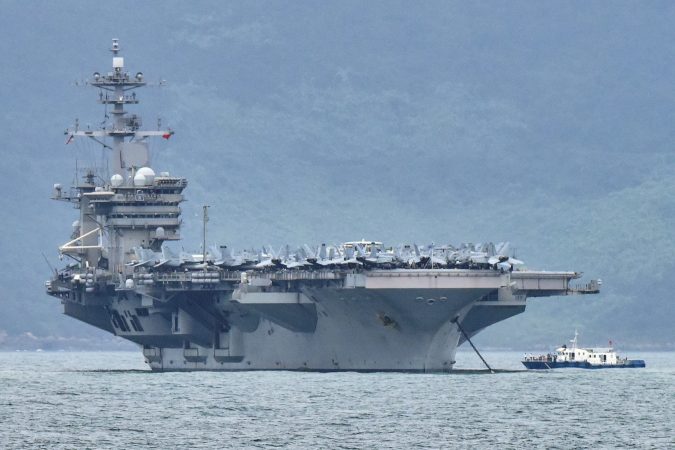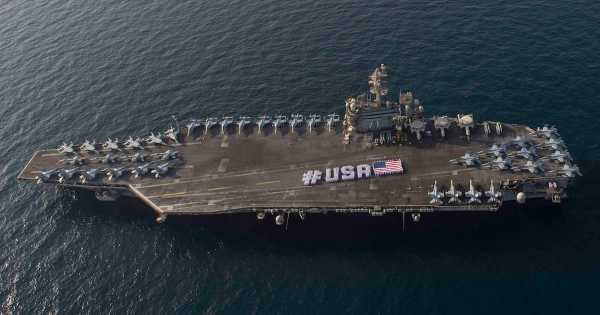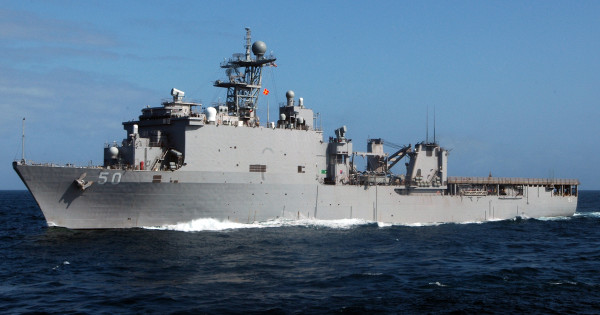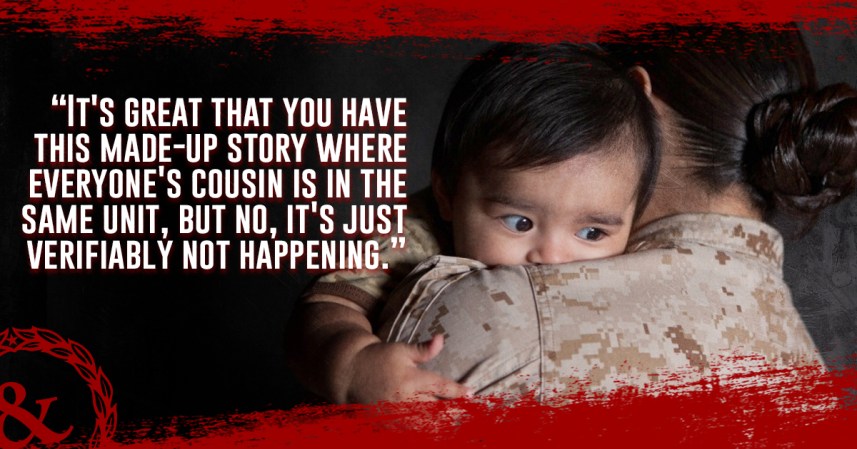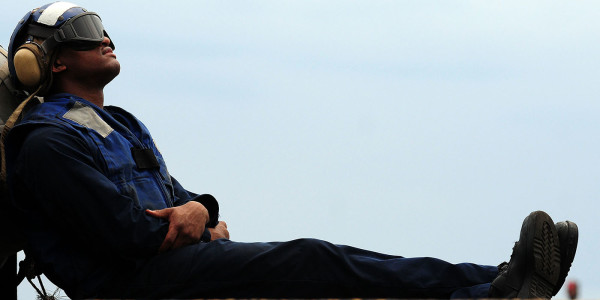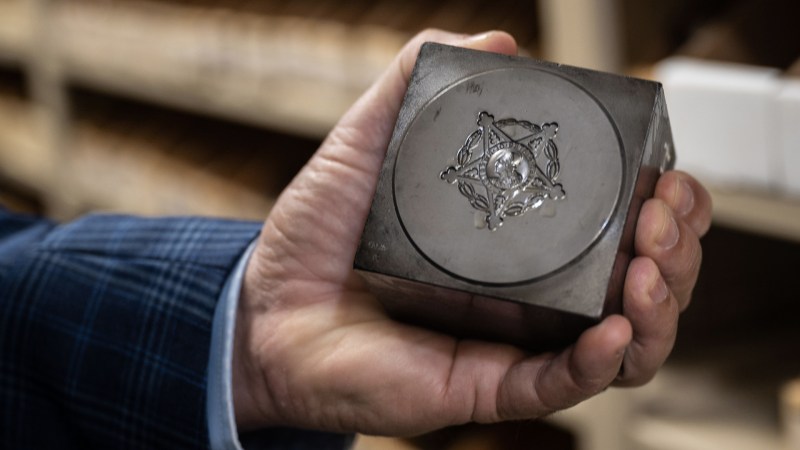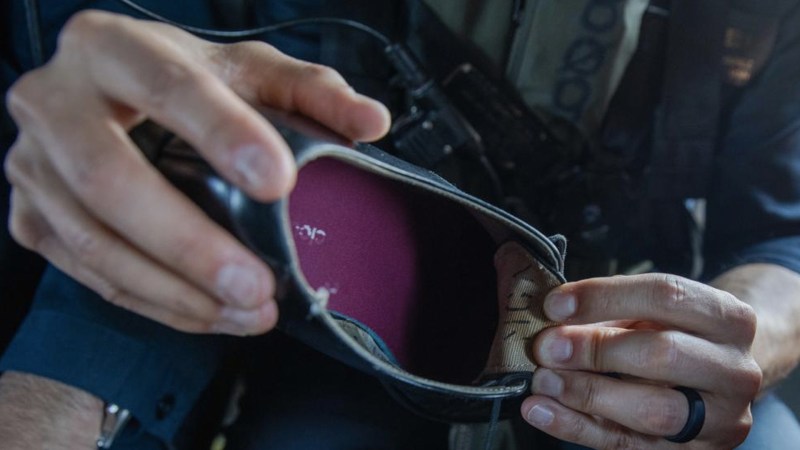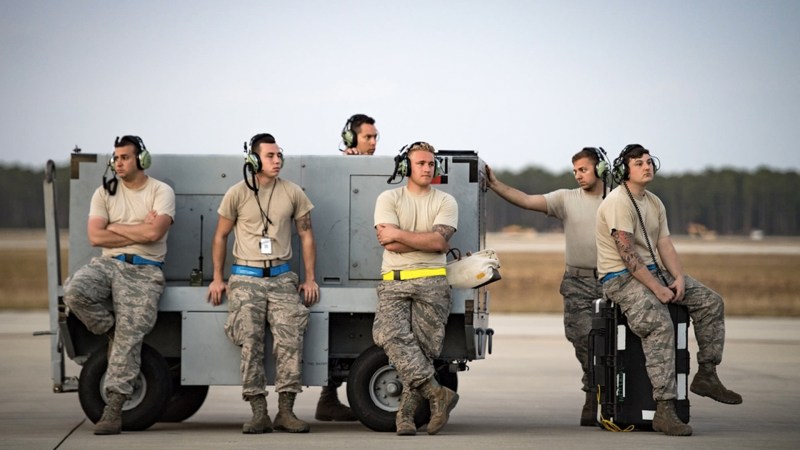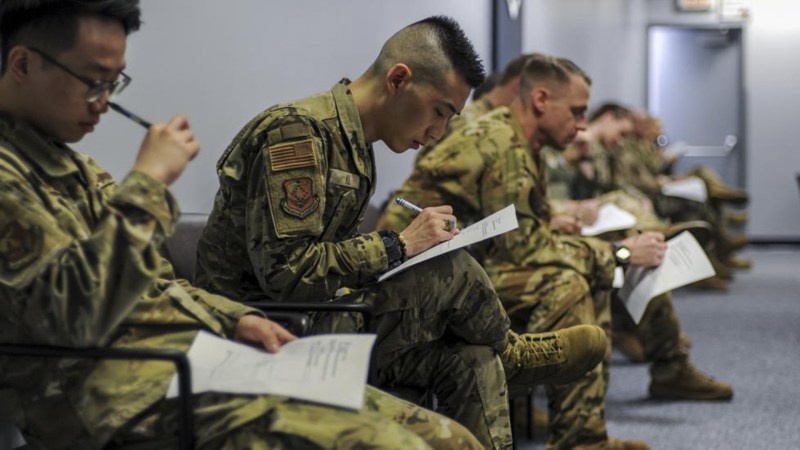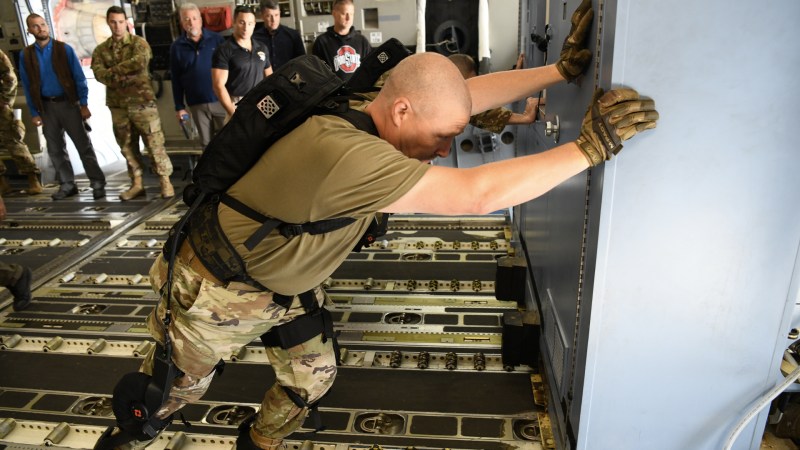The U.S. Navy’s rank and rate structure isn’t easy to understand when you grow up in a different branch of the U.S. military. For example, a captain in the Navy is not the same as a captain in the Army — one is an O-6 and may even be in command of an entire ship, whereas the other is an O-3 and may be in charge of a company of soldiers, at most.
The Navy’s rank and rate structure is identical to the Coast Guard, whereas the Army, Marine Corps, Air Force, and Space Force have their own, similar rank structure
Jayme Pastoric was in the Navy for 24 years and recently retired as a senior chief petty officer. He explained that the Navy rate and rank system can be confusing, but there’s no need to stress about it.
“When in doubt, salute it out, right? That’s for the junior enlisted in garrison, like, a gentle reminder,” Pastoric said. “You just can’t go wrong. Somebody’s going to stop and just help you out, or you’ll just figure it out. But either way, you’re not gonna get in trouble.”
History of rank in the Navy
The Navy rate and rank system was established in the late 1700s and was adopted from the British Navy’s hierarchy. Rating marks were used informally until they were approved in 1869.
In 1885, the Navy created first, second, and third-class petty officer rates and seaman first, second, and third-class rates for non-petty officers, establishing the difference between ratings and rates.
Subscribe to Task & Purpose Today. Get the latest military news and culture in your inbox daily.
Enlisted sailors were grouped as seaman, artificer, or special, and established the origin of sailor career paths today. The addition of the chief petty officer in 1893 became the final major change to rates and ratings in the nineteenth century. Since then, ranks, rates, and ratings have been created, shut down, and tweaked over the years in line with the needs of the Navy.
“Boy” is an example of a non-existent rate, which was for juvenile apprentices in 1798 when there was no minimum age for service in the Navy. The tradition of referring to sailors by their rating stopped in 2016 as a part of the Navy’s modernization plan, helping simplify the complexity of the almost 90 ratings that exist today. But, it was walked back a few months later, and rating and rank are still used to identify sailors.
As sailing ships transitioned to steam and, later, coal-fueled ships, ratings were added to match the new positions like coal heaver and fireman, boilermaker, blacksmith, and plumber and fitter.
The Navy’s pay scales have fluctuated with the changes in rank and rate since the 1700s but are similar to all the other branches today in that officers make more than enlisted, and the higher your rank or rate, the more years in service you have, the more you are paid.
Enlisted rates
Enlisted rates are straightforward, but with the rating, it can still be tricky. The identification of enlisted sailors in Army format would sound like forward observer private 1st class, or FOPFC. Forward Observer being the rating, and private 1st class is the rate.
In a joint service environment, most non-Navy personnel will address sailors as petty officer, chief, or even shipmate. But the proper way to address them is by their rating and rate. For exampled, a Boatswain’s mate petty officer 1 would be BM1, so, “Good morning, BM1.” In writing, sailors add their warfare pins too. Continuing the previous example, a BM1 with a Surface Warfare pin would sign an email as BM1(SW). If they have more pins, they add them in abbreviated form, separated by parentheses.
But, rates E-1 to E-3 are considered “nonrated.” Most sailors gain their rating through an advanced training school following basic training. Some sailors enter the fleet “undesignated” and are assigned to general career paths such as aviation (airman), deck (seaman), and engineering (fireman). These sailors can earn a rating through examination, known as “striking for rate.” Those who choose that approach are called “strikers.”
The rate is what sailors are identified by, so here are those rates in order from low to highest:
- E-1: seaman recruit
- E-2: seaman apprentice
- E-3: seaman
- E-4: petty officer 3rd class
- E-5: petty officer 2nd class
- E-6: petty officer 1st class
- E-7: chief petty officer
- E-8: senior chief petty officer
- E-9: fleet/force master chief petty officer or master chief petty officer
- E-9: master chief petty officer of the Navy, equivalent to the sgt. maj. of the army.
The confusing part about enlisted rates is the eagle in the petty officers’ rank insignia, which is referred to as the crow and marks the first rank in the Navy’s non-commissioned officer rates. In the Army, a shiny ‘eagle’ on someone’s uniform leads to an exchange of salutes because the only rank in the Army with an eagle is a colonel, which is an O-6.
“When you go into a joint base, you’ll see a lot of Navy petty officers. Their insignia is a crow above chevrons. I think a lot of people, when they see a shiny silver bird with a chevron, think ‘that’s a captain,’” Pastoric said. “And they just see that shiny thing and the petty officers get a lot of salutes.”
The rate of chief petty officer has a lot of influence in the Navy and a heavy burden of responsibility regardless of where they are assigned in the fleet. Once a petty officer receives a top-of-the-class test score, they are eligible to go to the chief’s board. Eligible sailors submit a package and are selected competitively against their peers by a board of Chiefs from their rate, a couple from outside their rate, and an officer chairing the board to ensure fair play. If they are selected by their peers, a sailor will receive their chief petty officer rank.
But, one must undergo the chief’s season before they will be recognized as a chief by their fellow sailors; though some sailors choose not to undergo the informal leadership training. It’s a six-week initiation period that has roots as far back as the 1800s, and traditionally involves a lot of hazing, although the Navy has started to clean that aspect up to be more professional and better balance home life and work. Before, the chief’s season would lead to sailors staying at work all week long, for weeks on end, and led to family issues and excessive drinking.
“It’s like 6 weeks of essentially in-depth leadership training. They put these folks through the wringer. Not so much like a boot camp, but like an informal way of education, leadership training, learning how to fail, that kind of stuff,” Pastoric said. “Supposedly, once all that’s done and those six weeks are over, you’ve earned the title.”
One thing to know is that their is a command path for senior or master chiefs. As an example, if a sailor is a boatswain mate master chief, they would be a BMCM, but if they are on the command path, it would be CMDCM.
You likely won’t get in too much trouble for saluting a petty officer, but it doesn’t hurt to learn the rank so you can stay in line with proper military etiquette and tradition.
Officer ranks
The Navy’s captain rank is an O-6 position and is the equivalent of a colonel in the Army, the rank before becoming a general officer or, in the Navy, an admiral. But, the captain of a ship is not always an O-6.
“So it depends on the ship, right? Small ships warrant O-4 and above, but some of the carriers and larger deck ships, usually ones with planes on it that take off, are usually an O-6,” Pastoric said. “The flag officer or admiral will be part of the carrier strike group, which consists of the aircraft carrier plus its smaller support ships in the naval group.”
Another confusing aspect of captain ranks in other branches vs. a captain in the Navy is the two vertical bars that represent the captain rank in the other branches symbolize an O-3, but in the Navy (and Coast Guard), an O-3 is a lieutenant.
But, the best way to hone your rank recognition is by studying.
Here are the Navy officer ranks from lowest to highest:
- O-1: ensign
- O-2: lieutenant junior grade
- O-3: lieutenant
- O-4: lieutenant commander
- O-5: commander
- O-6: captain
- O-7: rear admiral lower half
- O-8: rear admiral upper half
- O-9: vice admiral
- O-10: admiral
- O-10: fleet admiral
Navy warrant officers are identical to the Army and Marine Corps structure, running from warrant officer 1 up to chief warrant officer 5. They outrank all Navy enlisted personnel but are subordinate to O-1 and higher officer ranks. Though it still exists, warrant officer 1 is not used often, and chiefs who are selected for the warrant route transition to chief warrant officer 2.
Luckily, the confusing aspects of Navy officer rank aren’t a worry if you follow Pastoric’s sage advice: “When in doubt, salute it out.”
Strike a rate in the Navy
People can join the Navy as undesignated sailors, and those who drop out of BUD/S training are undesignated. Historically, undesignated sailors get the worst jobs on the ship, like scraping rust, cleaning the decks, or many other undesirable jobs with long hours.
There’s not as much of that today, thanks to the Navy updating the professional apprenticeship career tracks in 2018. This was done to cut down on the amount of unfair treatment and hazing that was happening, contributing to retention issues, and lack of discipline. But it’s a work in progress.
The PACT program is set up to provide undesignated sailors options to experience the Navy before selecting their job, called “striking a rate.” An undesignated sailor must wait until 12 months prior to their rotation date before they can strike a rate. Once eligible, they conduct a career development board with their command’s career counselor to discuss their options.
Then the sailor applies for a rate and a duty station based on the Navy’s billet availability. If the sailor doesn’t have a rate available during the cycle or does not choose a rate, they can do the work to meet eligibility for other rates or serve as a PACT sailor until their end of active obligated service (EAOS).
Once an undesignated sailor receives their new orders and rate, they are promoted to E-4 once their commanding officer ensures all paperwork is in order. If this sounds like a headache, just avoid it altogether by selecting a rate when you join.
A previous version of this story has been updated to provide more detail and correct outdated information about the sailor who was charged, and later acquitted, for the USS Bonhomme Richard fire.
The latest on Task & Purpose
- Navy fires captain of guided-missile cruiser USS Lake Erie
- The M10 Booker Combat Vehicle is definitely a tank, says Gen. Abrams
- Why Navy SEALs wear a trident and other facts about life as a frogman
- A-10 Warthogs arrive, more U.S. forces coming amid Israel-Gaza fighting
- Army plans to cut ‘unnecessary maintenance’ on vehicles and weapons

